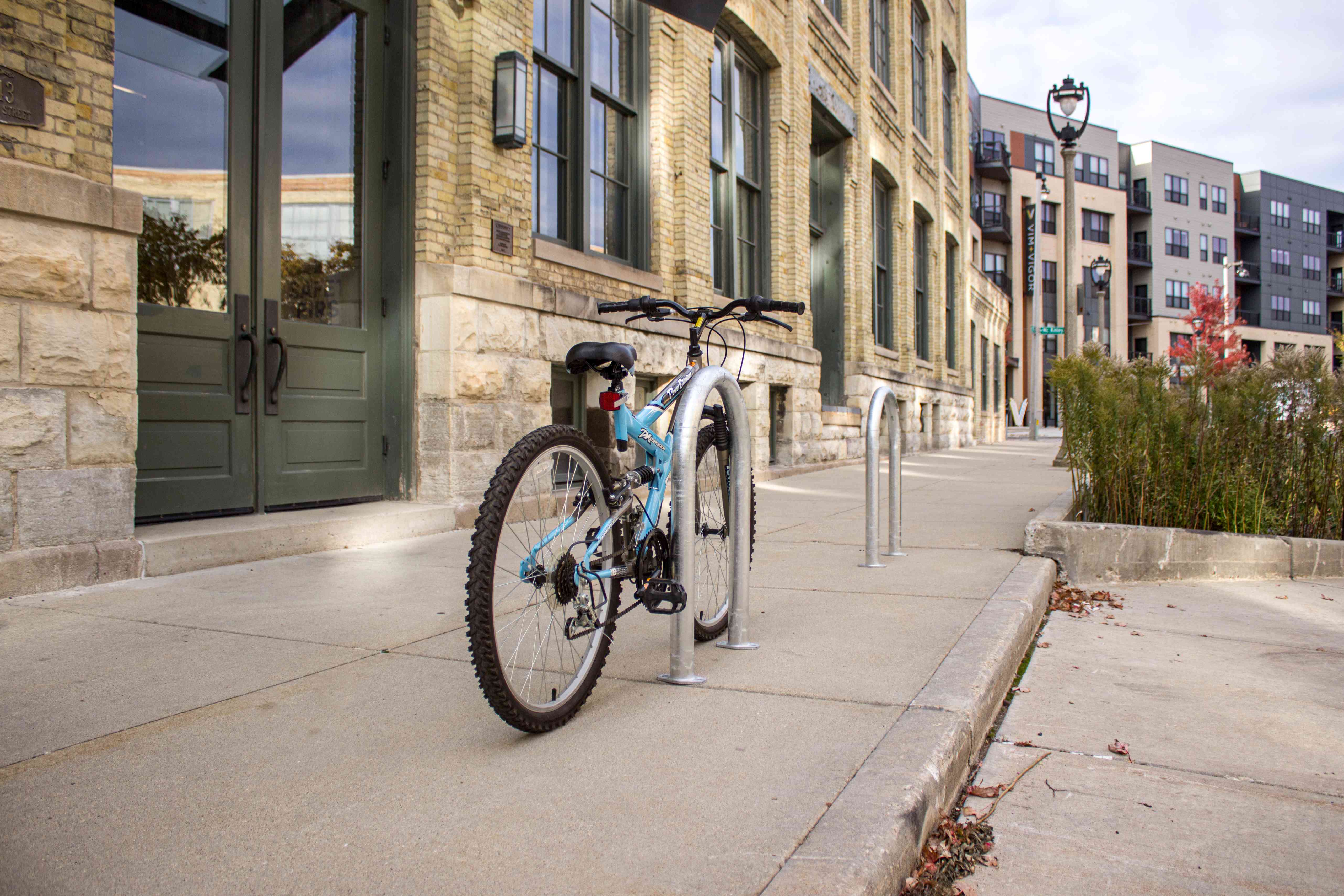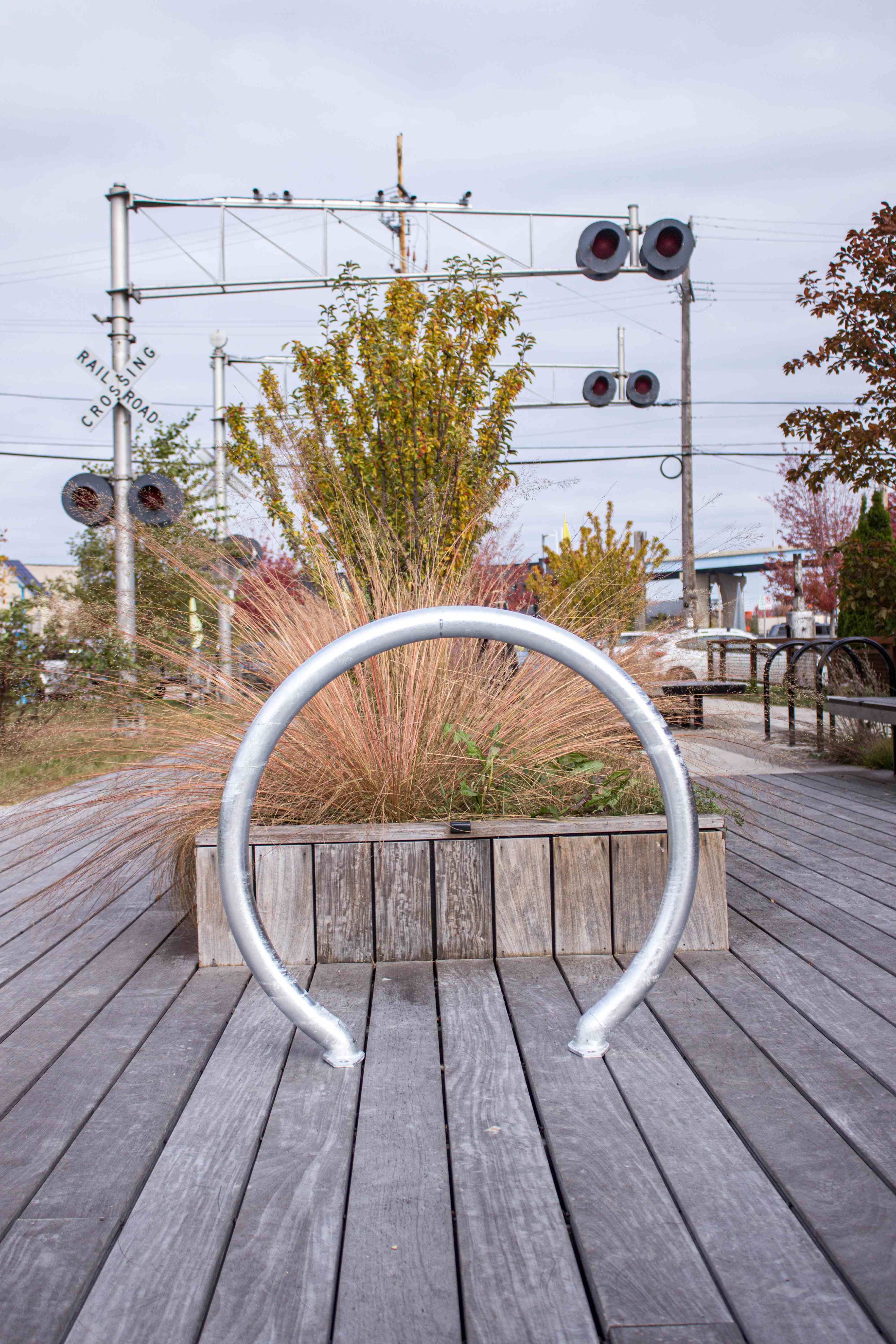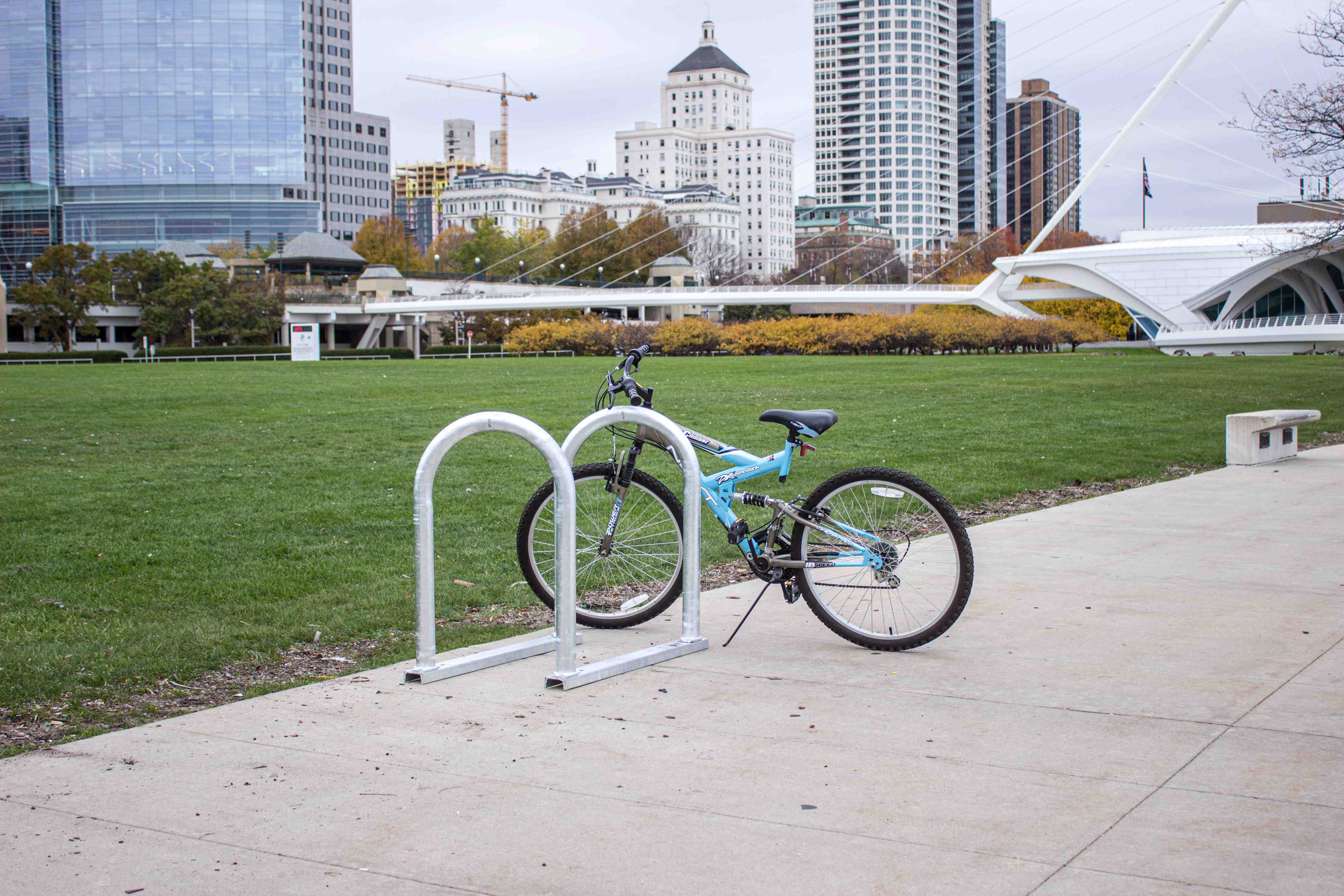Benefits of Including Bike Racks in Landscape Design
In recent years, the culture of cycling has transformed significantly. PeopleForBikes conducted a bicycle participation study “...reveals that 112 million Americans—35% of those ages three and older—rode a bike at least once in 2024. This marks the highest participation rate since the study began in 2014.”
This surge in cycling reflects a growing embrace of active living and highlights the need for thoughtful design that accommodates and enhances this movement. In this evolving landscape, the humble bike rack transcends its practical function to become a powerful design element. When strategically integrated, it’s a feature that encourages dynamic lifestyles, adds architectural interest and champions sustainability.
Landscape architects are reimagining public spaces by integrating elements that are both practical and visually engaging. A well-crafted bike rack can serve as a signature detail, shaping spaces that foster community, mobility and strategic design.
Enhancing Aesthetic Appeal
Modern bike parking is no longer just a functional element. Bike parking solutions have evolved into stylish and innovative design features. Well-designed bike rack systems now complement and enhance surrounding architecture.
By integrating bike racks into landscapes, designers create spaces that are balanced and organized. These racks add structure and style while clearly defining parking spots. With options ranging from minimalist to decorative, bike racks easily harmonize with any landscape design.
Using high-quality materials like stainless steel or galvanized finishes makes these installations durable. A wide range of powder-coated colors allows designers to tailor each piece to its surroundings. The result is a clean, organized aesthetic that enhances and reinforces the landscape's overall design vision.
Functional and Safety Advancements
Bike rack systems are a key component in organizing urban spaces and enhancing safety. They clearly designate the areas where cyclists can park and secure their bikes. This eliminates guesswork and prevents them from inadvertently blocking pedestrians or damaging nearby features.
Modern installations go a step further by incorporating vandal-resistant materials and accommodating various locking methods. Bike parking solutions reduce congestion and allow both cyclists and pedestrians to experience uninterrupted movement. The thoughtful spacing for parked bikes makes spaces safer and contributes to a more orderly, vibrant environment.
Connecting Communities
Cycling serves as a catalyst for community engagement and economic vitality. Accessible bike parking encourages people to ride to local businesses, parks and community centers, fostering a stronger connection to their surroundings. As cycling increases, it eases traffic congestion and helps create lively streets where businesses and community services can thrive.
High-quality bike parking is a visible sign that an area values sustainable transportation and healthy living. Well-placed infrastructure can inspire more people to choose cycling, creating a ripple effect that benefits everyone.
Beyond practicality, bike racks help strengthen social ties. They serve as informal gathering points where people can meet and interact, turning a simple design element into a catalyst for unity. A small yet significant investment in public design can lead to vibrant and connected communities.
Sustainability and Green Building Initiatives
Thoughtful architectural design plays a crucial role in encouraging people to choose bicycles over cars. By creating safe bike lanes and providing ample parking at key destinations, cycling becomes a far more attractive option. This focus on cycling infrastructure reduces traffic and greenhouse gas emissions. Adding bike racks to your landscape signals a clear commitment to a greener, more sustainable future.
Bike racks support eco-friendly transportation while lowering your project’s carbon footprint. Adding sustainable elements can help your project earn LEED points and other green certifications. For those interested in taking sustainability to the next level, the U.S. Green Building Council guidelines can provide insights into achieving a more environmentally responsible project.
Parking with Purpose
Bike racks have evolved far beyond their original purpose as simple parking spaces. They are now pivotal design elements that shape the future of our landscapes. The integration of bike racks enhances public spaces and supports eco-friendly transportation.
By prioritizing cycling infrastructure, designers help create greener, more connected spaces that encourage movement and sustainability. Investing in bike racks is investing in the future of dynamic, thriving communities.



